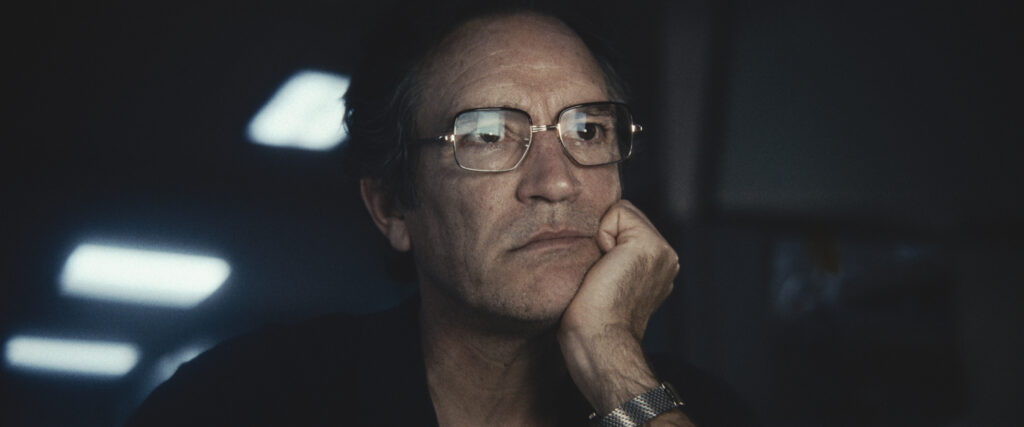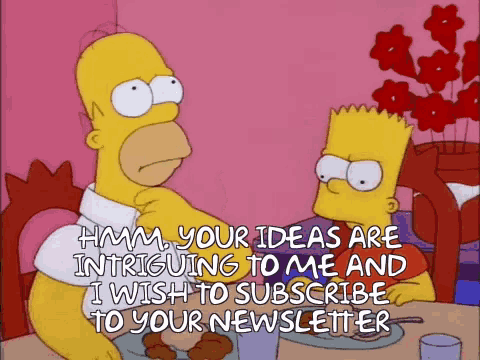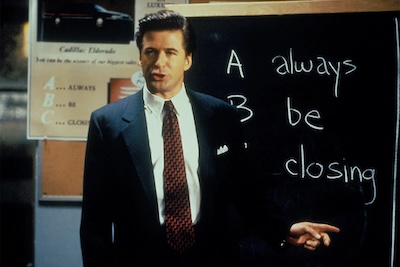September 5 Picture Editor Hansjörg Weißbrich describes the challenge of combining historical footage with story and what went into creating tension in Geoff’s (John Magaro) crucial scene.
In Tim Fehlbaum’s September 5, a character hits a button and original footage from 1972 seamlessly pops up as if what you’re watching is happening live. While the direction and performances help ground this thriller, Hansjörg Weißbrich’s editing fuses past and present to drop audiences into the room making important news decisions regarding the depiction of the hostage crisis at the 1972 Munich Olympics.
I loved learning more about Weißbrich’s process in an email chat about the film, out December 13 in select theaters. Read our conversation below!
The Contending: You’ve worked on some of my favorite films, like I’m Your Man. Love that one! How did this project come about for you? How do you go about choosing projects?
Hansjörg Weißbrich: Thank you for mentioning I’m Your Man; it is one of my favorite films, too. I love working with Maria Schrader. We’ve known each other for almost 20 years now and have done four projects together including Unorthodox and She Said.
September 5 came to me via producer Thomas Wöbke. I’ve known Thomas for more than 30 years; he gave me my first long feature film as an editor way back in 1995, and I’ve been his go-to editor ever since. Thomas introduced me to Tim (Fehlbaum), when they were preparing Tim’s first feature film Hell. I did a little bit of editing consulting on Hell and on Tides/The Colony. And for September 5, we finally worked together. I love Tim as a director and the way he approaches his work. I was already involved in the script stage, which is a great advantage, so I could start making notes early on in the process.
I generally choose my projects by the story being told. I need to connect. I like meaningful and relevant projects and love to create a riveting and gripping viewing experience. I also need to connect with the director.
The Contending: What did you do to prepare? Did your German background help you in really adding some depth to this film when it comes to editing?
HW: The events at the 1972 Olympic Games in Munich are still widely known in Germany. I myself lived in Munich for 15 years before moving to Berlin. It certainly helped me knowing a bit about the background, but I still learned much while doing research on the topic. Tim and his co-author Moritz Binder did extensive research because the ultimate goal was to be as accurate, authentic, and respectful to the real events as possible. We also wanted to use a lot of original archive footage, so much of the research part was done in the script stage, because we wanted it to be an integral part of the script already.
On Mixing History and Film: “We tried to use as much playback as possible in order to create the most authentic look.”
The Contending: I was so impressed with the mix of history and film. The way someone would press a button and we’d go live to the feed. How meticulous did you have to be? And what was it like piecing it all together?

HW: This was a huge challenge. We had three sorts of archive footage. First the original broadcasting tape of that day from ABC with Jim McKay reporting live. Second, archive footage from other different sources. And third, recreated scenes. For example, the balcony scenes should match seamlessly.
Tim didn’t want to reenact Jim McKay, because he’s such an iconic broadcasting legend. So he decided to use him entirely from the original footage. We only have a couple scenes where we see him from behind or through a window that were shot with a body double. It certainly helped that our lead characters communicate with Jim McKay via monitor anyway, but we had to carefully work around the fact that we didn’t have McKay on screen all the time, because in the original footage, they frequently cut away from him, so we just had bits and pieces. Also, we couldn’t choose performance-wise because we just had that one live tape. Other than that, we treated McKay like any other character in our movie.
The archive footage had been prepared for on-set playback. We tried to use as much playback as possible in order to create the most authentic look, even in the reflections on the actor’s faces when they stand in front of the monitor wall. But of course, we had to modify some parts in the editing and postproduction for timing or logistical reasons. To make the look match seamlessly production even kept the monitor wall after shooting had wrapped so at the end of the editing process we were able to film all additional shots from the same monitors before we went into VFX compositing.
We worked meticulously to get everything right. The way the monitor wall is functioning, the way the editing table runs. It helped me a lot that I worked on the same type of editing table when I was an assistant editor in the early 1990s and those tables were still in use. Tim and our production designer Julian R. Wagner were very dedicated to finding all this ancient technical apparatus, like the big studio cam that is being rolled out, which is very funny to watch from today’s perspective.
“The key for me was to approach the film not so much as a thriller but more like a drama and not only create the nail-biting tension but also give room and weight for the emotional story beats.”
The Contending: The scene where John Magaro has to make an important call really builds tension well. What was it like cutting this scene?
HW: We spent a lot of time getting the pacing of the film just right. Within the scenes and for the overall balance. I think I watched the whole cut once a week to get a feeling for that overall arc. And I remember that at one point we felt we had to give more weight to that moment when Geoff eventually decides to go on air with unvetted facts. So we extended the moment of him thinking what to do and what would be the right decision. It is also a fight between his loyality to Roone or Marvin. That’s his big conflict and a big decision for him and we wanted to give him this moment.
The Contending: There are a lot of characters in this film, and yet we get to know most of them. Was that part of your editing process? The leads get even time.
HW: Yes, exactly. That was one of the main challenges in the editing to find the right balance for each of the characters. Tim and our DOP Markus Förderer basically shot the film in long takes, always with two cameras, both hand-held, every take was different. They wanted to shoot it like a documentary team would do. So we ended up with tons of footage and had to build the scenes and character arcs from there. We first tried to focus on our leads and tell the others along the way. For me, it was a fun challenge because I had a great variety of choices and options.
I generally cut the story from inside the character’s perspective; I want to identify with that character and learn to understand how he acts and thinks. This feels like a natural process to me, maybe benefitting from years of work on actor-driven movies. The key for me was to approach the film not so much as a thriller but more like a drama and not only create the nail-biting tension but also give room and weight for the emotional story beats, which certainly helps in getting to know the characters well.
The Contending: One of the magic tricks of this film is that it feels like it’s in real time but it’s over the course of many hours. Was that something you were cognizant of the whole time? How did you try to tackle that?
HW: Yes, we actually wanted to create this real-time feeling. We wanted the audience to be part of the team, to be in the studio. However, we had to condense the timeline, because the story evolves within 22 hours. We used elliptic storytelling and tried to shorten where we could. This was a lot of small stuff, like walking, etc. There’s that scene in the beginning where Geoff wakes up Marvin and says to him: “I’m gonna call Roone,” and we cut to him smashing the phone on the desk in the control room. Originally, he was walking from one room into the other, but we felt we wouldn’t need the walking. And that it was more dynamic to use that smash cut.
At one point in the editing, we tried to use chyrons to give some orientation on the timeline. But ultimately, we felt it worked against this real-time feeling, we didn’t want to distract from this feeling because it’s so nail-biting. So we decided not to use them.
September 5 plays in select theaters starting December 13.








![‘Pirates! The Penzance Musical’ Breakout Star Nicholas Barasch Discusses Performing On The Tonys With Seven Stitches On His Face [VIDEO]](https://thecontending.com/wp-content/uploads/2025/06/Pirates0011r-120x86.jpg)
